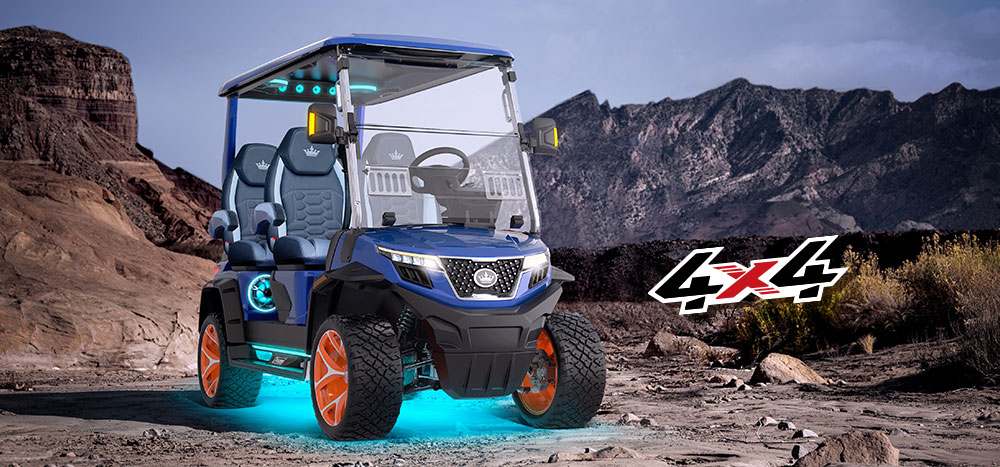-
Shopping Tools
-
Care & Maintenance
-
About
-
Dealer Login

Modern electric golf carts excel on paved paths and light trails, but when grades get steeper or surfaces loosen, four wheel drive golf carts add the extra traction and control you need. By distributing torque to all four corners, 4×4 systems help prevent wheelspin, improve hill starts, and stabilize directional control on mud, gravel, sand, and rutted climbs.
Look for a purpose-built 4×4 configuration paired with components that favor torque, control, and cooling:
On uneven or slippery ground, weight shifts continuously. If only one driven wheel loses grip, a 2×4 system can stall or spin. A 4×4 layout sends drive to at least one wheel per axle—often more—so you keep forward motion while maintaining steering authority. Even simple limited-slip strategies share torque when a tire unloads, while advanced controllers modulate each motor for smooth, uninterrupted traction.
| Feature | What it does | Hill benefit |
|---|---|---|
| Twin-motor or front assist | Drives both axles or adds front pull when needed | Reduces wheelspin on loose switchbacks |
| Limited-slip/torque vectoring | Redirects torque from slipping wheel to gripping wheel | Maintains momentum over ruts and roots |
| All-terrain tires | Open tread and compliant sidewalls | Better bite on gravel and sandy inclines |
| Optimized PSI | Set within tire spec for terrain | Larger contact patch without excess drag |
